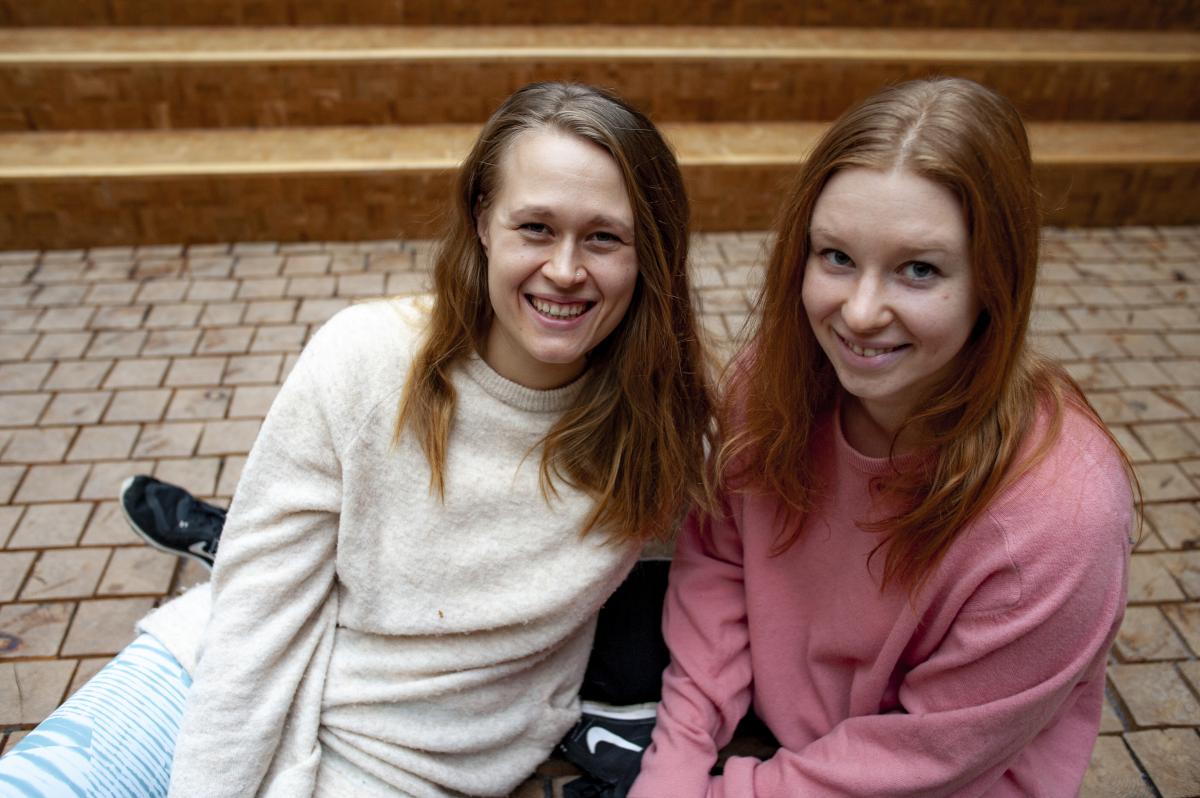Studying dance performance in Uniarts Helsinki
Students Johanna Karlberg and Sanni Kriikku talk about applying for and studying in MA programme in dance performance.

Both Sanni Kriikku and Johanna Karlberg are at the second year of their studies in the MA programme in dance performance.
Where are you from and where have you studied before?
Sanni Kriikku: I’m from Helsinki and I have studied previously a degree programme in dance pedagogy in Savonia University of Applied Sciences in Kuopio, which I graduated from in 2016. As part of those studies I spent a year doing an exchange in Oslo National Academy of the Arts. After graduating, I worked as a freelance dance artist until I started my MA studies in dance performance in 2019.
Johanna Karlberg: I come originally from Kirkkonummi. After high school, I studied at the Västra Nylands folkhögskolan in Karjaa, and then for three years at the Riviera in Outokumpu, Finland. After graduating from there in 2016, I worked as a freelancer and did simultaneously some cultural production studies at Yrkeshögskola Arcada, after which I started BA studies in dance in Uniarts Helsinki in 2018. However, right after a year I applied for these MA studies. It is possible to apply for the MA studies also without a BA degree, when one has at least 60 credits of university study points and a sufficient body of work from the field.
Why did you want to study in this particular programme?
J: In the BA studies it became clear to me which direction I was headed. Dance and performance art are strongly built on performers. They create dramaturgy and carry it in performances – this interested me. I consider myself a performer-maker. Physical and solo work is meaningful for me – a way of creating and performing myself. This I’ve got to practice a lot in these studies.
S: I got a positive view of the studies from my colleagues who studied in the programme before me. I’ve always been drawn to perform, and this is also a unique place to establish contacts and network.
How has the studies met your expectations? Has there been surprises?
S: I had pretty open mind and not too much expectations when I started really. Perhaps surprisingly for me thought, the studies have focused a more than I expected on questions of performance itself, rather than just on dancer’s skills. In the programme dance art is viewed from different perspectives, and we have had joint courses e.g. with choreography and LAPS MA students. Then of course, the moments of learning and discovering something new are always nice surprises of their own kind.
J: I have enjoyed the structure of the studies, often consisting of workshop weeks led by different visiting artists. I think we could have had even more discussion about performing on a really concrete level. It is interesting to look at e.g. what happens in my body when I’am seen, and what my body communicates?
What has been challenging?
S: My decision to work on the field simultaneously with the studies has proven to be quite energy consuming.
J: Learning to listen to myself has played an important role in my studies. Stereotypically a dancer doesn’t want to be stigmatized as difficult, and thus easily agrees to things, and both crosses their own boundaries as well as lets others do so. It’s important to learn how to take care of yourself and to know when to do something and when to say no. I’ve have e.g. negotiated my freelance projects with the programme a lot. In the end I feel that all has been possible for me, because I’ve been able to argue why certain projects were necessary for my studies at that particular moment.
How was it to apply to the programme?
J & S: Auditions were super relaxed. They included making a solo, and taking part to different classes of dance performance and performance art. In general, the programme has understaning and dialogic atmosphere.
What tips would you give applicants or somebody considering applying?
J: When applying for a master’s degree, it might be a good idea to already have some understanding of what you want and what your artistic interests are. It is good to be open and honest in the auditions, to be yourself. Remember that you can trust that the jury is on your side and that they are truly interested to get to know your knowledge and skills. Just as you are applying for programme, they are applying for students. It is a two-way assessment situation.
S: One way to prepare for the audition would be to attend various professional classes and workshops, and to reflect on what is important for myself in dance. During the audition I found it helpful to frame the tasks at hand to suit better for me. As I prepared the solo, I also came up with few sentences how to describe it with, since I had anticipated that we would be asked to reflect on our work. And while it’s good to be able to open up your own thinking, there’s no need for you to be ready in any way. We are coming here to learn and to be in a process.
Tanssitaiteen blogi
Tanssitaiteen blogi on perustettu alustaksi, jolla keskustella erilaisista tanssitaiteeseen ja sen tekemiseen liittyvistä kysymyksistä ja havainnoista. Blogin kirjoitusten kautta pääset tutustumaan tanssitaiteen opiskelun arkeen opiskelijoiden ja henkilökunnan näkökulmista, ja lukemaan ajoittain ilmestyviä opiskelijoiden ja opettajien haastatteluja.
Uusimmat julkaisut
Seuraa blogia